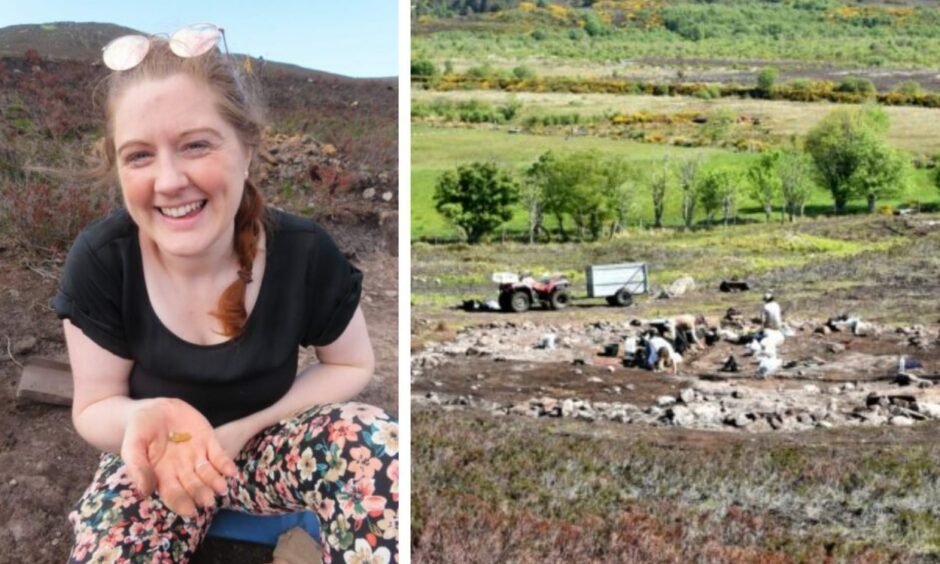
The equivalent of an Iron Age vacuum cleaner appears to have been run over the floors of the remains of two ancient hut circles being excavated on a Sutherland hillside this week.
The large structures on Aultcraggie croft near Brora being investigated were clean as a whistle inside, to the initial disappointment of volunteers.
At first, there was not an artefact to be found — just a couple of pottery sherds, chips of quartz, fragments of flint and a small chunk of quartzite, possibly a tool.
But all this changed and excitement took hold at the 11th hour of the dig, when the outline of a broken pot began to appear in the floor.
The Aultcraggie dig was organised by Clyne Heritage Society, the third archaeological excavation the society has undertaken in recent years.
They hired Guard Archaeology as professional partners, with Alan Hunter Blair on site throughout since the dig commenced on May 22.
The rest of the squad was made up of students from St Andrews, Edinburgh and Glasgow Universities, and dozens of local volunteers — from school children to grannies.
Fate chose one of the volunteers, Eustace, to find the pot.
It was his last day on the dig, so coming across the five fragments was a thrilling bonus.
Over hours and hours, he painstakingly trowelled and brushed to reveal the outline of the pot, thought by Guard archaeologist Alan Hunter Blair, known as Blair, to be a large one used for cooking from the Iron Age.
“Great day, great dig, I need my bed now,” was Eustace’s exhausted pronouncement on his find.
The fragments will ultimately be sent to Guard’s pottery expert Beverly Ballin-Smith.
Blair said: “It looks like a really thick, crudely made Iron Age vessel, probably for cooking.
“It was smashed where it lay, and we’ll know more once it’s analysed, but at this stage it looks like a characteristic Iron Age pot.”
Brora Hotel staff member’s fantastic flint find
Blair was more excited about another 11th hour find, made by local Rebekah Brett-Pitt, who works in the Royal Marine Hotel in Brora and spent her down-time at the dig.
She found a small piece of honey-coloured flint, properly worked into a blade.
Blair said: “It’s the first definite worked tool to be found on the site, and it could be Mesolithic in age.”
The Mesolithic period ran from roughly 9,000 to 4,300 years ago.
Revealing the structures buried under peat and heather for 1,500 years was an exciting journey in itself for the team.
Aultcraggie has many signs of habitation dating back thousands of years.
Luckily, crofter Allan Grant got behind the idea of a dig to see what could be underneath some of the many intriguing mounds on his hillside.
Two mounds, known to be ancient hut circles, within striking distance of the croft were chosen by Clyne Heritage Society for the community dig through the good offices of one of its archaeology enthusiasts, Allan’s partner Fiona Ross.
It’s first time in 1,500 years that the hut circle interiors have seen the light of day, let alone have the presence of humans walking their floors.
How the crew carefully dug through hundreds of years of history at Brora site
After a scrape-off of the topsoil by Allan with his digger, the archaeologists set to work scraping away the layers of habitation, from grey dust which appeared to have been brought in and spread about in a form of resurfacing, through an orange-yellow layer, which also seemed to have been brought in as a form of resurfacing.
Below that, a dark layer full of tiny charcoal specks— another attempt at freshening up the floor, perhaps for hygiene and to absorb damp.
At that point, habitation might date back 3000 years, to the Bronze Age, says Blair.
Encouragingly, a couple of large enough fragments of charcoal were found which have the potential to be radio-carbon dated.
The hut circles are impressive in size, one with an internal diameter of 33 ft, the other 36ft.
At their thickest, the densely packed walls are more than 3ft wide.
As work continued, mysteries only deepened at the site
As the dwellings gradually appeared under the trowels of the volunteers, many more mysteries emerged.
Why on earth would one of the hut circles have a 10 degree sloping floor and much narrower walls on its north side?
The hut was built on the hillside, but why didn’t its inhabitants clear it until they had a flat floor, like they did with the southern half of the building?
Answer came there none.
In the same hut a mysterious flower-shaped arrangement of stones came to light, rounded stones placed like petals around a central stone.
Again, no easy answers as to why the ancient inhabitants placed the stones in this way.
Blair said: “The so-called flower structure I think is a purely random arrangement of stones, predominantly flat, that have been laid out to form this stone setting.
A ‘distinct absence of charcoal’ and potential hints of inscriptions
“I’ve seen similar in other structures but associated with hearths; but there’s a distinct absence of charcoal here so I’m not sure.
“It could be a post pad for timber supporting the roof but that doesn’t seem likely either as you’d have thought there would have been a more regular arrangement of them.”
Only a few fragments of charcoal appeared as the volunteers lifted the stones to find nothing underneath.
Another stone unearthed in one of the round houses showed marks which might— just might— have been carved by humans, but Blair isn’t sure.
He said: “When light caught the inscriptions, it did look as though there may have been some incisions but whether they’re natural, or man-made it’s unclear. It’s not on any of the other stones, it’s quite distinct.
Locals thanked for coming out in huge numbers to help in Brora dig
For dig organiser Nick Lindsay, chairman of Clyne Heritage Society, the excavation has gone like a dream.
“The weather has been perfect, and we’ve had a great crowd of people.
“The students have all paid their own way to be here and have really enjoyed their time in Brora, getting to know the place and the locals as well as working hard on the dig.
“One day we had 90 visitors on site, including 23 children from Brora primary.
“Dozens of locals have given their time unstintingly.”
One volunteer, Janet French, comes from Swindon on regular visits to Brora, where her ancestors come from.
She joined the Aultcraggie dig this year, and volunteered on last year’s dig at Grianan, and the previous one of Wilkhouse drover’s inn on the Kintradwell estate.
She’s recently discovered her great-great grandfather’s abandoned croft in the township of Doll and hopes Clyne Heritage Society might consider a dig there in the future.
She said: “Aultcraggie is the earliest dig I’ve been on.
“What’s really impressive are the hut circles themselves, and that mysterious sloping floor.
“It’s fantastic to think that you’re treading in the same places as your ancestors for the first time in thousands of years.”
The dig is due to end today, June 2.
You might also enjoy:
Brora volunteer archaeologists unearth the secrets of the ‘bad minister’
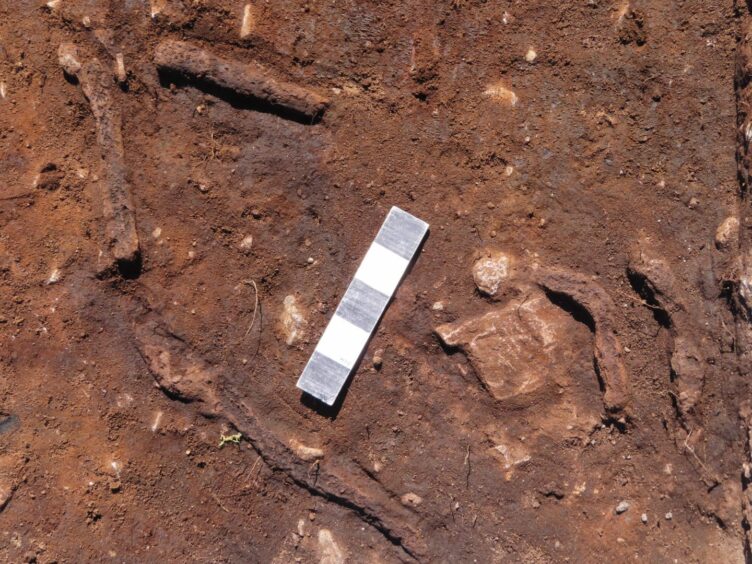


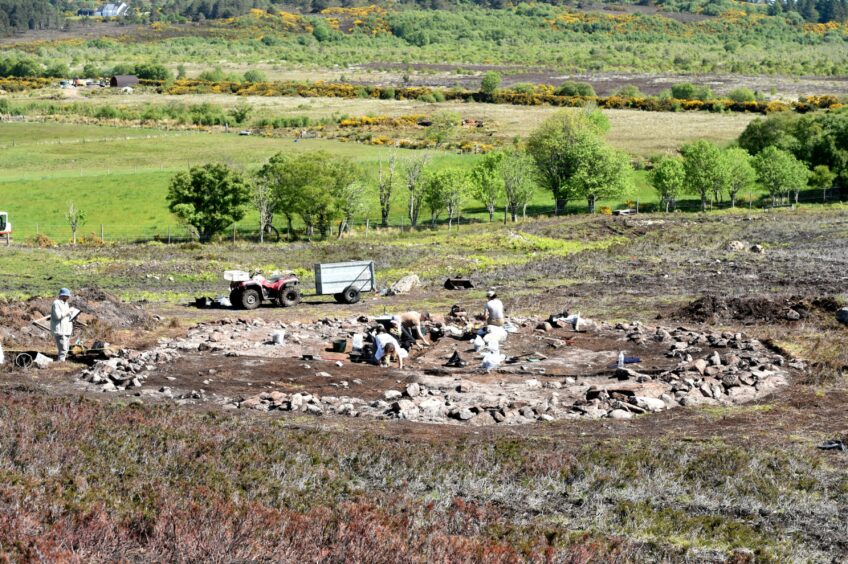
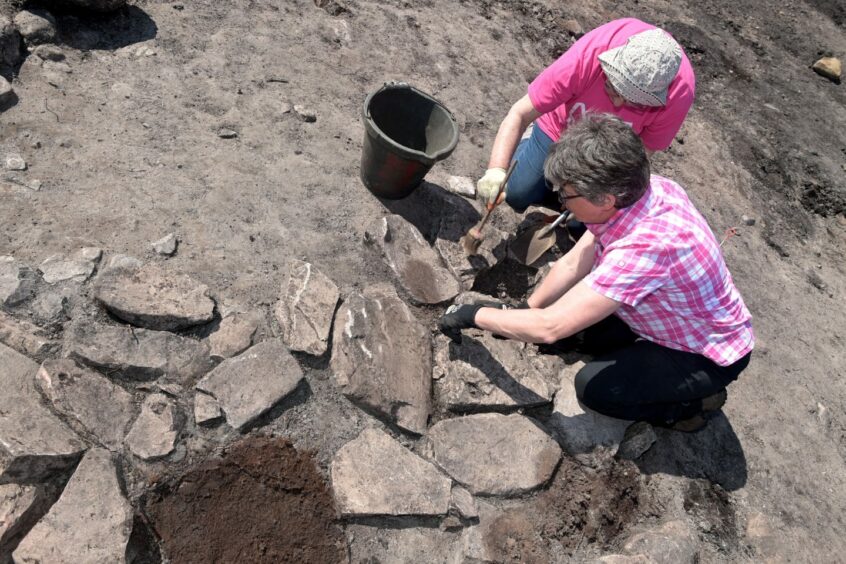
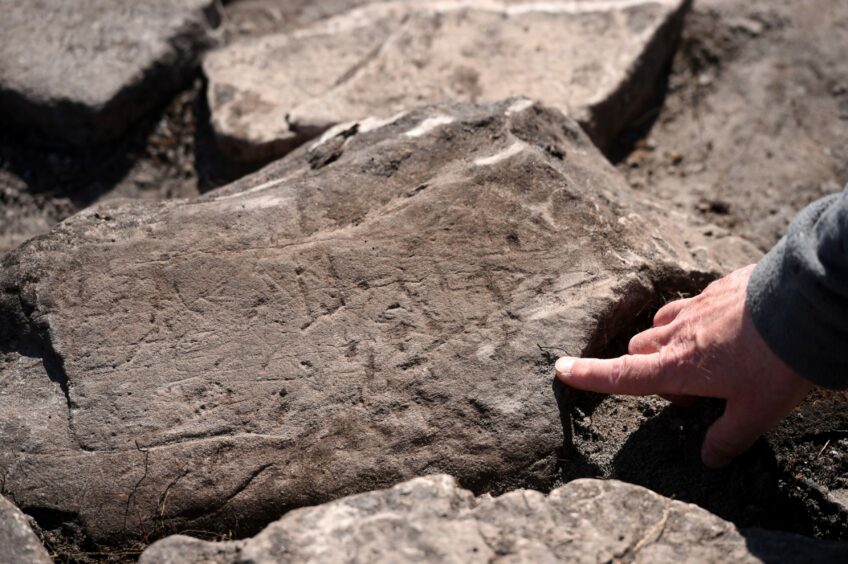
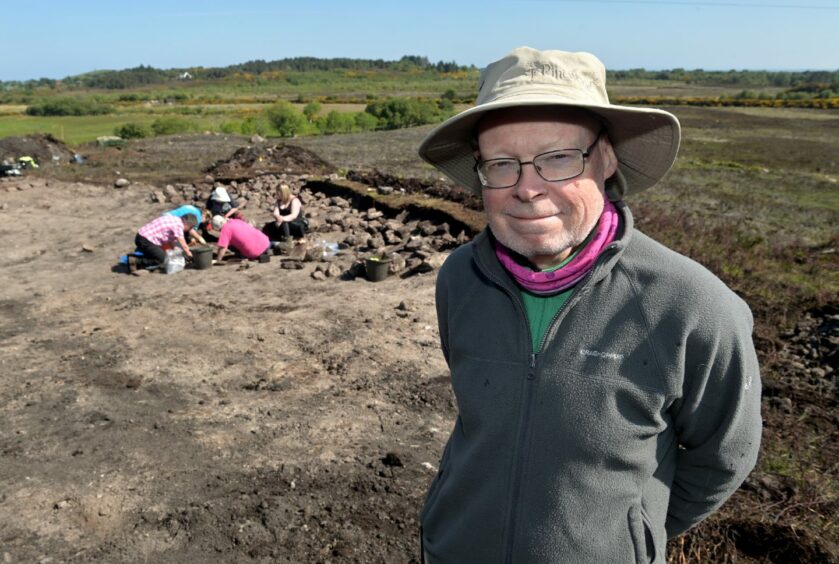
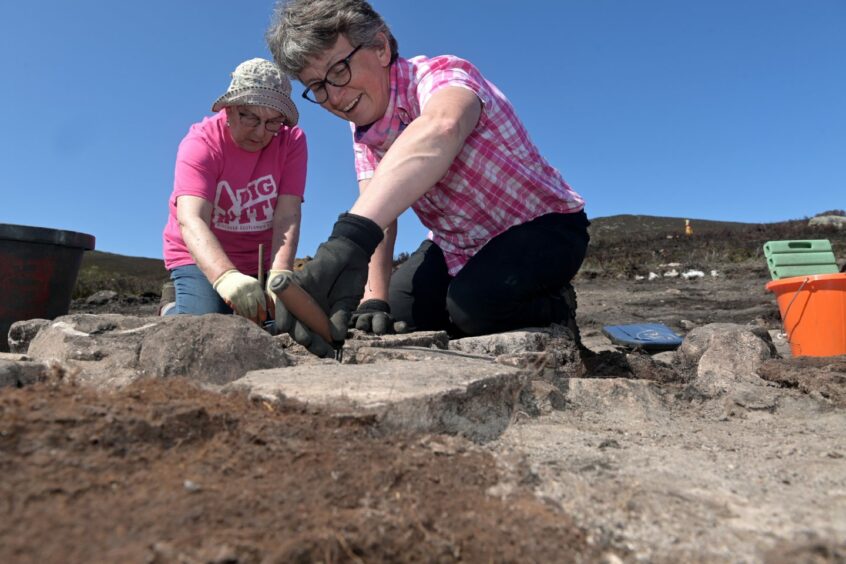
Conversation